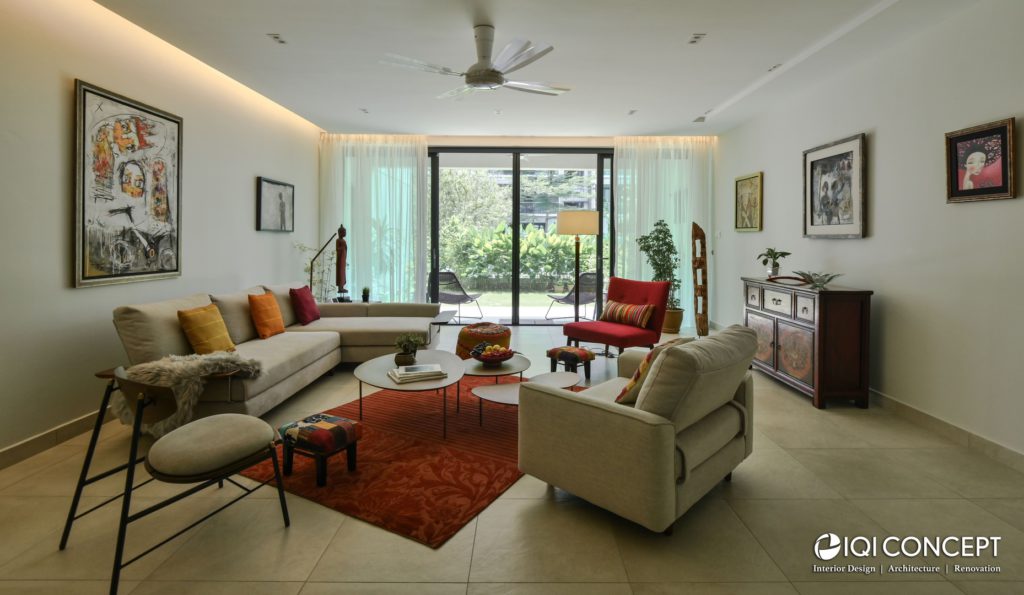The Do’s and Don’ts of Picking a Colour Scheme For Your Home
Deciding on a palette to dress your home in is a big decision as colour can greatly influence the vibe and in turn, your mood and comfort level. Here’s a guide on what to look out for and what not to do.

DO
…learn the basics about colours
The first thing you need to know is that colours have temperatures. They fall into either of these categories: Warm or cool. Red, yellow and orange are examples of the former while blue, green and purple come under the latter. Warm colours are cosy and inviting yet upbeat and energetic; cool colours evoke calmness, serenity and relaxation. Decide how you want each room in your house to vibe.
…use a colour wheel
It’s exactly that – a wheel showing a range of colours, with warm shades taking up one half and cool hues on the other. With that as your visual guide, plot out which of these 4 types of schemes (usually made up of 3 or 4 colours) best suits your personality and taste: Monochromatic (varying shades of one colour), analogous (colours that appear near to each other in the wheel), complementary (colours that sit on opposing sides of the wheel), and triadic (colours that are 3 spaces apart in the wheel).
…test on paper and with paint swatches and boards
Start with a shortlist of colours that you like. Then get a sketch of your layout and fill in with your chosen colours to see how they come together. This can be done on paper or digitally. Play around with different combinations. It’s also a good idea to use paint swatches and boards; go room to room and hold them up against the sections where you intend to paint them. Use large swatches and boards so that it’s easier to see how those colours work in a chosen space.
…choose a starting point
Trying to decide for the whole house can be an overwhelming task so pick one main area as the starting point. Usually, this would be the living room as it’s the first space you step into and it sets the tone for the whole house. Think about how you would like to feel when you use the space and if your favourite colours will give off that effect. Take note of the same as you work your way through the rest of your house.
…differentiate between downstairs and upstairs
For homes that have more than one storey, it’s a good idea to have separate colour schemes for each floor as they serve different purposes. Usually, bedrooms occupy the higher floors while living and dining areas are on the ground floor. Thus, you may want more soothing colours for the bedrooms while keeping warm, energetic tones for the living and dining rooms.

DON’T
…start with the walls
In fact, you should pick that colour last, after you have chosen everything else that needs to go into that room such as furniture, soft furnishings, and fittings. As the wall is the biggest feature, you want it to complement the rest and not fight against them visually. You may have chosen some unique décor items for your home and those could be hard to replace. So put all those in place first and let them inspire you towards choosing a wall colour that brings everything together.
…forget about lighting
Lights, both natural and artificial, reflect and deflect colours and make them appear quite different from day to night or from sunny mornings to gloomy afternoons. True colours are what you see in daylight. Light shades usually don’t alter as much but darker hues like indigo, for example, may look more blue or red under different lighting.
…limit yourself
If there’s a colour you really like but it doesn’t work on the walls, don’t despair. Your colour scheme is not implemented only with paint or wallpaper but is also carried through via décor items such as rugs, lamps, artworks, and accents on furniture, windows, and doors. That’s where you can incorporate those hues subtly without upsetting the balance.
…rely on catalogues or online samples
These days, we do most of our shopping online and while the digital sphere makes for a convenient resource, you can’t rely on it to show you colours accurately. It’s a good place to start checking out what’s available so you know what your options are but don’t make your decisions based solely on what you see on a screen.
All said and done, these are guidelines to help you pick a colour scheme and not hard rules that you must abide by. Ultimately, it’s what you want for your home that’s the most important. You’re the one who’ll be spending time in it so it needs to be comfortable for you.
Follow our socials to get the latest updates!
Looking to transform your home? Click here to get a free consultation now!